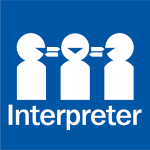Voluntary assisted dying is one of several choices that a person may have at the end of their life.
It gives people who meet eligibility criteria, and who are suffering and already dying, the option of asking for medical help to end their life. It won't be for everyone.
There are strict eligibility criteria for accessing it.
This is one of the safeguards in place to protect vulnerable people. To be eligible to access voluntary assisted dying, a person must one:
1. Have an eligible condition — an eligible condition is one that is advanced, progressive and will cause death, is expected to cause death within 12 months, and causing suffering that the person considers to be intolerable, too.
2. The person must have decision-making capacity.
3. Be acting voluntarily and without coercion
4. Be at least 18 years of age
5. Fulfill residency requirements.
There are three key phases in the voluntary assisted dying process and each phase has a number of steps.
The request and assessment stage.
This is the stage a person takes to request access to voluntary assisted dying.
It includes what the person and their coordinating and consulting doctor must complete to decide if the person is eligible.
The administration of the voluntary assisted dying substance stage.
These are the steps a person takes to decide how the substance will be administered. The person's coordinating doctor will talk to them about the different options.
It also covers the prescription, supply and administration steps.
After the person dies.
These other steps that occur after the person's death including disposal of any unused remaining substance, death certification and death notification.
Voluntary assisted dying is not emergency health care.
People may take weeks or months to work their way through the process and make the final decision to administer the substance.
People can stop the process at any point, for any reason.
People who are assessed as eligible for voluntary assisted dying may never choose to use it.
For more information visit health.qld.gov.au/vad or contact QVAD support on 1800 431 371.



